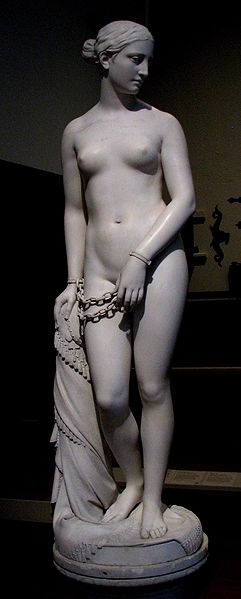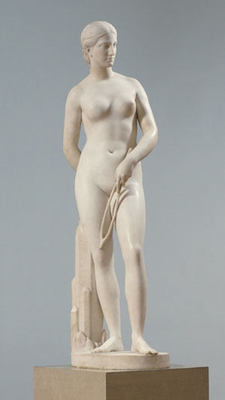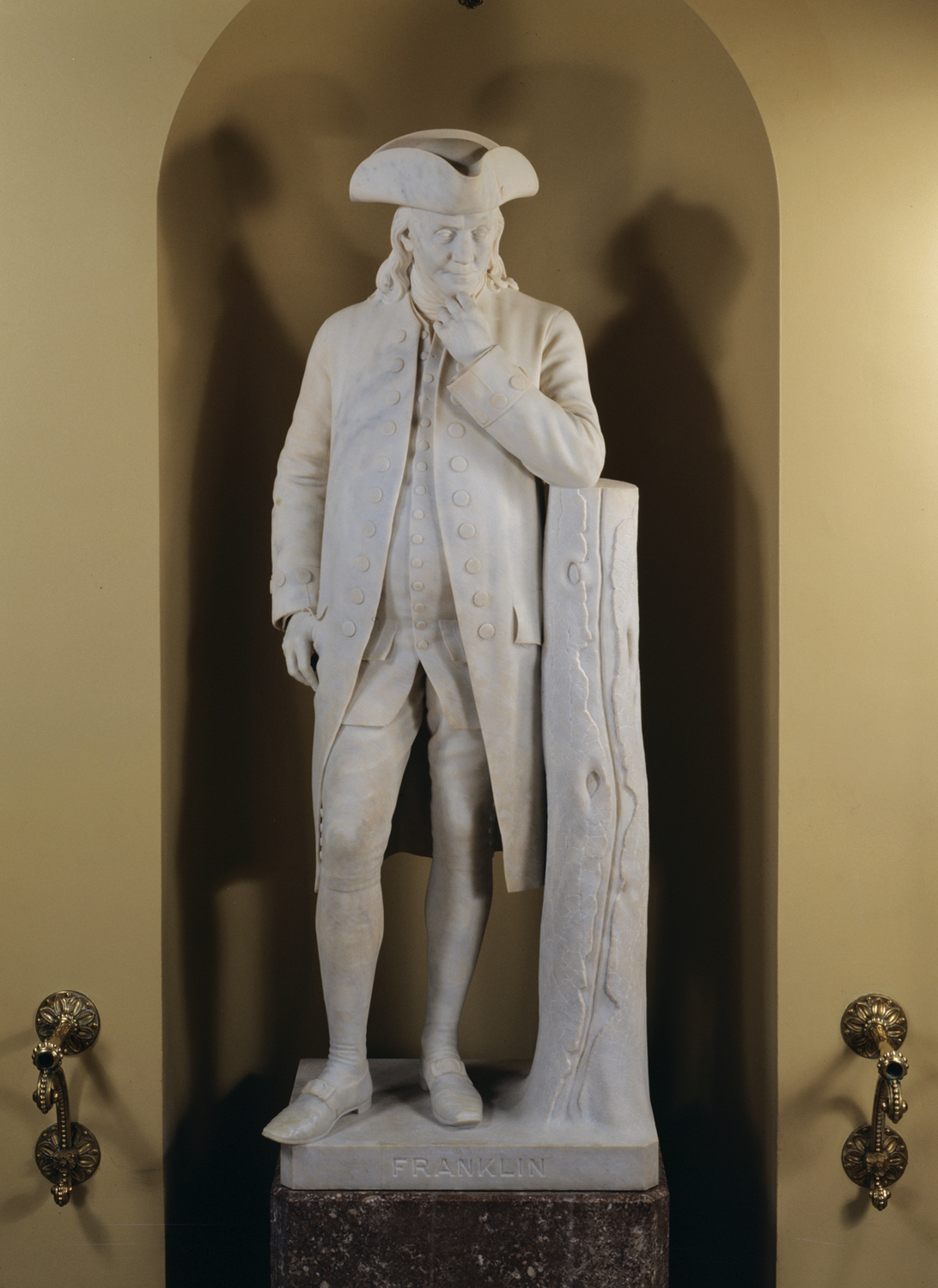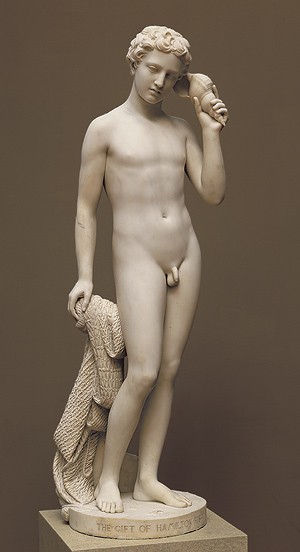<Back to Index>
- Engineer George Washington Goethals, 1858
- Sculptor Hiram Powers, 1805
- 1st Prime Minister of Imperial Russia Count Sergei Yulyevich Witte, 1849

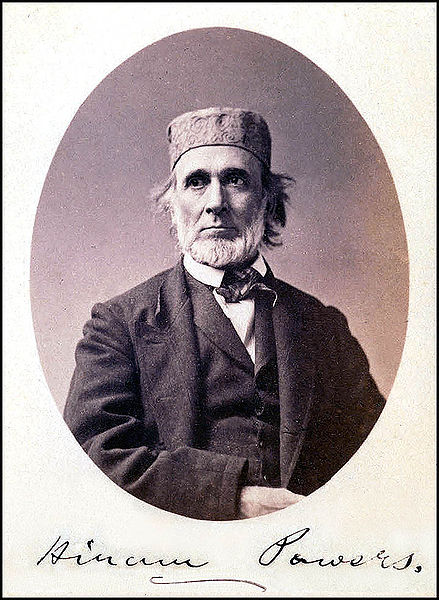
Hiram Powers (June 29, 1805 - June 27, 1873) was an American neoclassical sculptor.
The son of a farmer, Powers was born in Woodstock, Vermont, on July 29, 1805. In 1818 his father moved to Ohio, about six miles from Cincinnati, where the son attended school for about a year, staying meanwhile with his brother, a lawyer in Cincinnati. After leaving school he found employment superintending a reading-room in connection with the chief hotel of the town, but being, in his own words, forced at last to leave that place as his clothes and shoes were fast leaving him, he became a clerk in a general store. At age 17, Powers became an assistant to Luman Watson, Cincinnati's early wooden clockmaker. Powers was skilled in modelling figures. Watson owned a clock and organ factory, Powers set himself to master the construction of the instruments, displaying an aptitude which in a short time enabled him to become the first mechanic in the factory.
In 1826 he began to frequent the studio of Frederick Eckstein, and at once conceived a strong passion for the art of sculpture. His proficiency in modelling secured him the situation of general assistant and artist of the Western Museum, kept by a Louisiana naturalist of French extraction named Joseph Dorfeuille, where his ingenious representation of the infernal regions to illustrate the more striking scenes in the poem of Dante met with extraordinary success. The idea for this entertainment was conceived by Fanny Trollope. After studying thoroughly the art of modeling and casting, at the end of 1834 he went to Washington DC, where his remarkable gifts soon awakened general attention.
In 1837 he settled in Florence, where he remained till his death, though he did travel to England during this time. He developed a thriving business in portraiture and "fancy" parlor busts, but he also devoted his time to creating life-size, full-figure ideal subjects, many of which were also isolated as a bust. In 1839 his statue of Eve excited the warm admiration of Bertel Thorvaldsen, and in 1843 he produced his celebrated statue The Greek Slave, which at once gave him a place among the leading sculptors of his time. It was exhibited at the centre of the Crystal Palace Exhibition and Elizabeth Barrett Browning wrote a sonnet on it. The sculpture The Greek Slave became an abolitionist cause and copies of it appeared in many Union-supporting state houses. Among the best known of his other ideal statues are The Fisher Boy, Il Penseroso, "Eve Disconsolate", California, America and The Last of the Tribe (also called The Last of Her Tribe).
One of Powers' sons was the sculptor Preston Powers. The elder Powers died on June 27, 1873, and is buried as were three of his children, in the English Cemetery, Florence.
Direct descendants of Hiram Powers in Europe included the noted
Futurist designer, Ernesto Michahelles (a.k.a. Thayaht), painter
Ruggero Michahelles, and architect Michele Michahelles. In 2007 the Taft Museum of Art, Cincinnati, Ohio presented
the first major exhibition devoted to the most celebrated nineteenth
century American sculptor, "Hiram Powers: Genius in Marble". This is
the same place of the first solo exhibition of Powers' work in
Cincinnati in 1842, when Nicholas Longworth opened his private residence to allow the public to view Power's newest sculpture.
